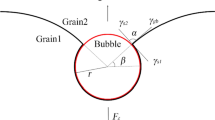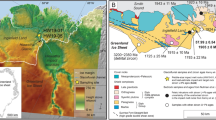Abstract.
Static grain growth is a relatively simple transformation in which grain size increases under driving forces caused by grain and interphase boundary curvature. Given the relative simplicity of the protocol for grain growth experiments, measurements of grain boundary mobility show surprising variations. Boundary mobilities during grain growth are affected by solute and impurity chemistry, chemical fugacity of trace and major elements, pore size and number, pore fluid chemistry, the presence of melts, and the presence of solid second phases, as well as temperature and pressure. All of these factors may exert influence on grain growth of rocks in natural situations and many are also present during the laboratory experiments. Provided that the necessary kinetics parameters are known, bounds may be placed on the interface mobility when pores, partial melts, or solutes are present. To predict the rate of grain growth in natural situations will require improved laboratory data and careful consideration of the thermodynamic conditions likely to be encountered in nature.
Similar content being viewed by others
Author information
Authors and Affiliations
Corresponding author
Additional information
Electronic Publication
Rights and permissions
About this article
Cite this article
Evans, B., Renner, J. & Hirth, G. A few remarks on the kinetics of static grain growth in rocks. Int J Earth Sci 90, 88–103 (2001). https://doi.org/10.1007/s005310000150
Received:
Accepted:
Published:
Issue Date:
DOI: https://doi.org/10.1007/s005310000150




